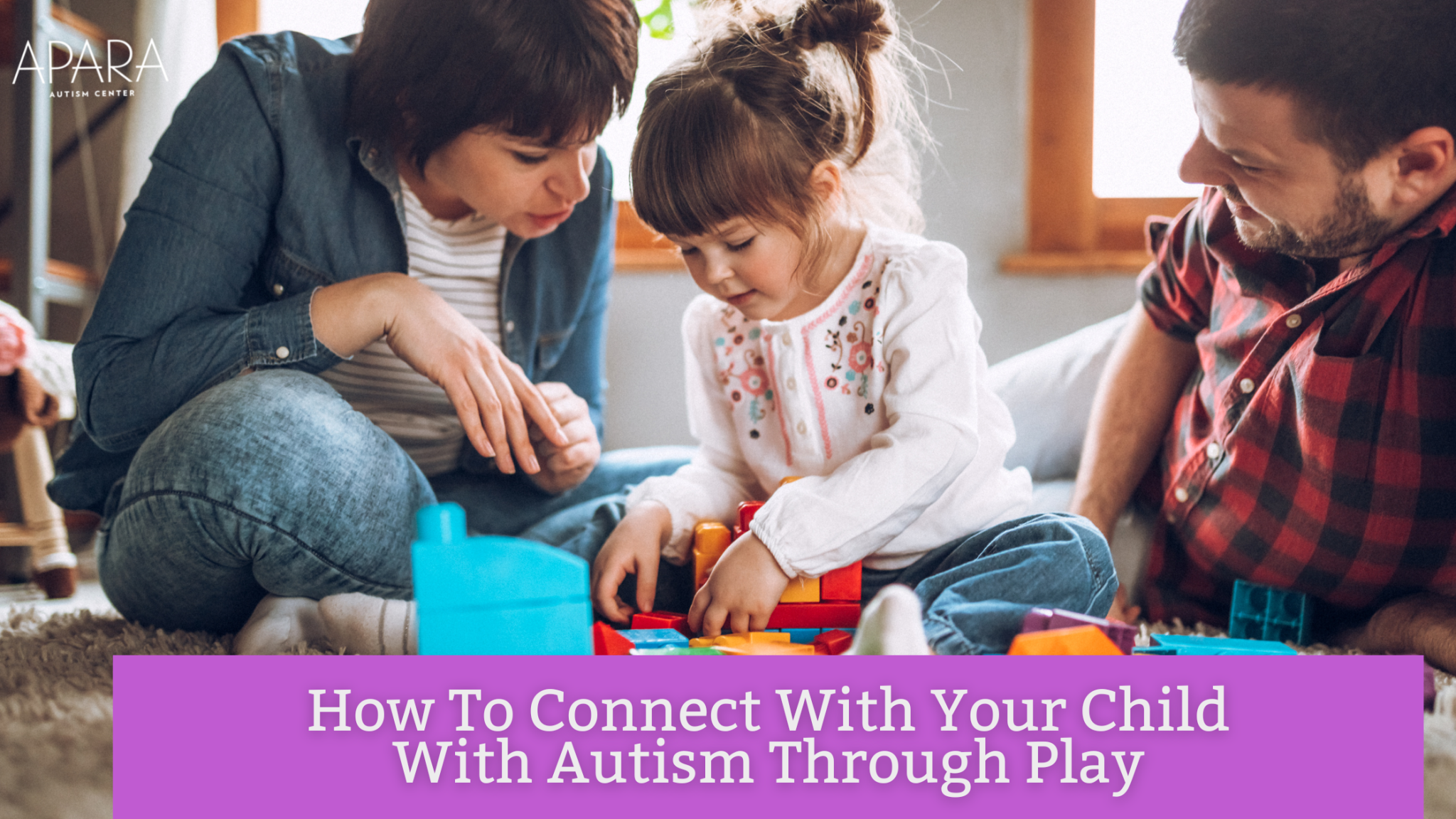How To Connect With Your Child With Autism Through Play

Wondering how to play with your child? It can be challenging to feel as though you are really connecting with a child with autism during play. It can also be challenging to know how to set up play opportunities and whether or not to teach during play (and how to accomplish specific goals).
One of the key concepts in Natural Environment Training is that you follow your child’s lead! When we join in our child’s interest, we increase motivation and interest in engaging with you. In addition, we can learn to know their preferences and observe signs indicating they are ready to start or finish an activity.
Follow your child’s lead
Prepare the environment to contrive opportunities in the play area, leave several toy options in sight and within reach (around the floor, on a table, etc.) Once your child enters the space and chooses a toy or activity, join in next to them. If the child decides to change the activity, you will also change it.
Examples: playing with cars, reading a book, and running.
Face to face
Place yourself in his line of sight to help increase eye contact and engagement.
Examples: Lay on the floor next to your child. If your child turns around, move to their field of view.
Play with the same or similar toys
If your child is playing with blocks, put a block on top to build a tower. If they play with cars, bring more cars and make them crash.
Complement the activity with related toys
If they are running around the house, make an obstacle course to go through. If the child is playing with toy food, bring plates and cups to pretend to eat at a restaurant.
Comment on your child’s activity
Provide language through modeling while avoiding asking questions.
Example: “vroom vroom, “mooo says the cow,” yummy, this burger is delicious,” I have the red block.”
Imitate your child
Imitation improves engagement, increases their ability to imitate, and can help expand their language repertoire and play skills.
Imitate play with toys
When your child is playing appropriately with a toy, do the same with a similar toy.
Example: pushing a car down a ramp
Imitate actions
Imitate their actions and add on to expand their play skills.
Example: crawling or jumping up and down
Imitate appropriate behaviors
Only imitate behaviors that you want your child to continue. For inappropriate behaviors, model an appropriate behavior instead.
Example: spinning the wheel of a car, pushing the same musical button
Animation
This helps increase your child’s awareness of nonverbal communication and can help increase engagement during play!
Be excited about the activity.
Show interest through eye contact, laughter, and enthusiasm.
Example: When your child does something silly, react with laughter
Exaggerate gestures, expressions, and speech
Overemphasize gestures and facial expressions and change the tone of voice to draw attention to specific words or actions.
Examples: When your child pops a bubble or sings baby shark
Use attention-getting phrases
Phrases like “wooow” and ” uh-oh!” direct your child’s attention to you or an action you are doing.
Examples: crashing a tower “uhhh oh!”, coloring “woooow look at that.”
Wait with anticipation
After using an attention-getting strategy, pause and wait for your child to respond. Waiting increases the chance your child will play with you or vocalize a response.
Examples: “1,2…3”, “ready, set, go.”
Respond to your child
When they make eye contact or any vocalization, respond!
Examples: If your child is non-vocal and makes any sound while playing, respond by saying, “yes! That is a car! Or that is fun!”
About the Authors
Apara Autism Center is a leading provider of ABA therapy in Texas to children ages 18 months and up. We understand the difficulty of dealing with uncertainty and are prepared to assist you with our collaborative developmental therapy support. If you’re looking for ABA therapy near you, we have centers in Houston, Dallas, San Antonio, and surrounding areas. Apara Autism Center employs a team of Board Certified Behavior Analysts (BCBAs) and Registered Behavior Technicians (RBT) that can assist you with resources to help comfort your child during stressful times. We include parent training as collaborative support for the whole family. If you need more information, don’t hesitate to call (844) 272-7223 or contact us at info@aparaautism.com with your questions or to enroll. We accept most insurance plans and offer full and part time programs as well as in-home therapy options with no waitlist.